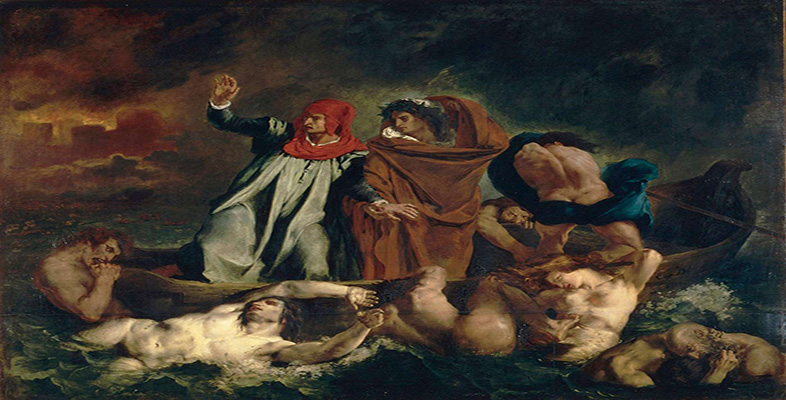2 The Death of Sardanapalus
2.1 Inspiration for the Death of Sardanapalus
Plate 1 is a reproduction of Delacroix’s The Death of Sardanapalus, believed to have been completed sometime between November 1827 and January 1828.
Clickto see Plate 1: Eugène Delacroix,The Death of Sardanapalus [Tip: hold Ctrl and click a link to open it in a new tab. (Hide tip)]
It draws on a legend, fabricated in the Persika by the Greek writer Ksetias (fourth century BCE), that had already featured in a play by Byron entitled Sardanapalus, published in 1821. It concerns an Assyrian ruler whose palace was threatened by his rebellious subjects. Sardanapalus, descendant of Semiramis, was the last king of Nineveh, a city roughly halfway between the Mediterranean and the Caspian Sea in present-day Iraq. According to the legend, he died in 876 BCE. In order to avoid the humiliation of defeat by his subjects (a theme that would have evoked, in Delacroix’s era, the revolutionary mob), he ordered himself, his palace and all his prized possessions (including his favourite concubine, Myrrha) to be burned and destroyed. In Delacroix’s version, unlike Byron’s, Sardanapalus meets his fate not just with Myrrha, but with an entire roomful of concubines and slaves. Delacroix probably drew on a number of sources in the visualisation of this incident. Apart from Byron, it’s thought that he was also influenced by the Greek historian Diodorus (first century CE), the Roman historian Quintus Curtius (also first century CE) and possibly an engraving of a pseudo-Etruscan relief of the incident (see Johnson, 1981, pp.117–18). It has also been suggested (see Lambertson, 2002) that the conception and iconography of Delacroix’s painting might have been inspired by similar work by Charles-Émile Champmartin, an artist with whom Delacroix was acquainted. Champmartin had visited the Near East and in 1828 completed a large-scale Oriental massacre scene, Massacre of the Janissaries: see Plate 2.
Click to see Plate 2: Charles-Émile Champmartin, Massacre of the Janissaries
However, the uncommissioned Sardanapalus was probably, above all, a product of Delacroix’s fancy. Archaeological accuracy was certainly not possible as Nineveh had not yet been excavated.
